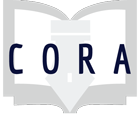Assignment
Information Needs, Types, and Qualities
This activity proceeds via Socratic questioning. The goal is to have students explain the common stumbling blocks they encounter as they look for information and as they write papers (if they have). The role of the librarian is to facilitate the discussion by providing a contextual framework for student experiences. By showing students that their research process follows a common pattern, they can make better choices about how, when, and where to look for information (e.g., not jumping straight to peer-reviewed articles when they can barely define their topic)
| Attachment | Size |
|---|---|
| 250.83 KB |
Students will be able to articulate the type of information they need to complete a given task. Students will be able to identify the appropriate uses for various information formats. Students will be able to explain the criteria by which we identify the credibility of an information source. Students will be able to identify which attributes of a given information source should be included in an annotated bibliography.
Information Literacy concepts:
Individual or Group:
Ability Level:
This is a frequent activity I developed for our second-semester composition program. The common assignment is an annotated bibliography of 8-12 sources. Analyzing student bibliographies showed that they were having a tough time understanding how format can affect the usefulness of an information source, within context. The most frequent problem involved students jumping straight to peer-reviewed scholarship when they could barely articulate their research question. Likewise, students often do not approach research strategically and with an eye towards collecting a range of sources that will help address many common research needs. Since this activity is coupled to an annotated bibliography, a secondary pay-off is in helping students write their annotations. Once able to articulate the information need a source satisfies, they can better conceptualize how to incorporate the information into their paper.
This is a Socratic activity, so the librarian has to take the traditional "sage on the stage" approach and has to be comfortable keeping the conversation on track, no matter where it might go. The attached instructions are only a loose framework to help guide discussion.


Comments
I really love this guided
I really love this guided disscussion, especially if it timed properly in the course. I particularly like the way that you organized and wrote out the outline for the discussion. I think that level of detail makes it easier for those of us who may be less comfortable with an open ended discussion. I am going to start writing my outlines for similiar activities in the format youhave presented here. I frequently structure at least a portion of my IL sessions using this approach even when the learning outcomes are different. I have found an approach similar to this to be especially useful when discussing finding sources. I ask students to go ahead and find one scholarly source and then have them report back to the class what they found, where they looked, and what problems they had finding it. It always generates a good list of sources and research strategies and I like the fact that it allows students to learn from each other.
May I ask, what is the most interesting this you have noticed when you have this discussion with students?
Lindsey: Like a lot of
Lindsey: Like a lot of libraries, we use a lot of active learning, which is great but it makes it very difficult for students to take notes, ask questions, or reflect on concepts. So, the most interesting thing about this activity is that it encourages students to take notes and it gives them the opportunity to ask questions and reflect on concepts. It's also extremely malleable and can be adjusted to fit any class or topic. One other interesting thing: since I started doing this discussion a few years ago, several composition instructors have adjusted their annotated bibliography assignments to match more closely with the concept of information needs, types, and qualities. I consider that a major win!
The worksheet is so helpful